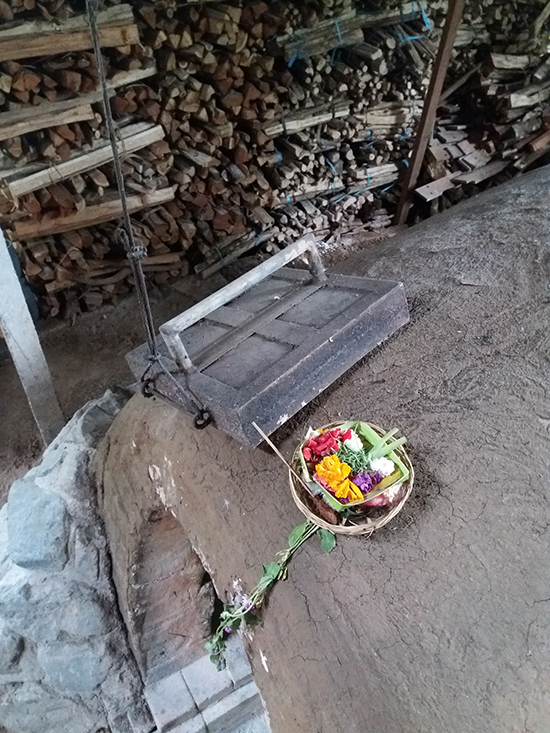Some of you might not know yet, but in this lifetime, I am also a potter (among other hats I am wearing).
[me stoking the anagama kiln with wood as fuel]
[schooling time, learning how to throw 'seasons" tea bowl for tea ceremony]
I sometimes hand built pieces that I made out of clay and sometime I throw them on an electric wheel. To throw the clay means to form a piece using an electric wheel or sometimes just a plain old kick wheel (old school).
If I have to explain the whole process of ceramic making, I might end up writing a book out of it. So to simplify and just stick to the title of the post; I will focus on Anagama wood firing.
[pieces that I have thrown on an electric wheel that I will carved later]
[carved and trimmed pieces, raw clay]
[making huge plate]
[hand-carved this tea bowl, as it has to weigh 270 gram before firing]
[wadding our pottery before stacking them inside the kiln]
[sorting out these raw pieces before stacking them into the kiln]
Anagama is a Japanese cave-like kiln that is an ancient type of pottery kiln (kiln=oven) brought to Japan from China via Korea in the 5th century. The kiln consists of a firing chamber with a firebox at one end and a flue at the other. Although the term "firebox" is used to describe the space for the fire, there is no physical structure separating the stoking space from the pottery space. The term anagama describes single-chamber kilns built in a sloping tunnel shape.
The anagama is fueled with firewood, in contrast to the electric or gas-fueled kilns commonly used by most contemporary potters. A continuous supply of fuel is needed for firing, as wood thrown into the hot kiln is consumed very rapidly. Stoking occurs round the clock until a variety of variables are achieved including the way the fired pots look inside the kiln, the temperatures reached and sustained, the amount of ash applied, the wetness of the walls and the pots, etc.
[me in my shift of stoking the kiln]
[gotta use the special google for the firing, the fire can be blinding]
[side stoke]
[reduction]
Burning wood not only produces heat of up to 1400°C (2,500 °F), it also produces fly ash and volatile salts. Wood ash settles on the pieces during the firing, and the complex interaction between flame, ash, and the minerals of the clay body forms a natural ash glaze. This glaze may show great variation in color, texture, and thickness, ranging from smooth and glossy to rough and sharp. The placement of pieces within the kiln distinctly affects the pottery's appearance, as pieces closer to the firebox may receive heavy coats of ash, or even be immersed in embers, while others deeper in the kiln may only be softly touched by ash effects.
Besides location in the kiln, (as with other fuel-fired updraft kilns) the way pieces are placed near each other affects the flame path, and, thus, the appearance of pieces within localized zones of the kiln can vary as well. It is said that loading an anagama kiln is the most difficult part of the firing. The potter must imagine the flame path as it rushes through the kiln, and use this sense to paint the pieces with fire.
The length of the firing in this particular kiln that I fired (along with other potters and in shifts) is 54 hours nonstop. We use the trims of coffee wood, as you might know that coffee tree is trimmed so that the coffee beans can be easily harvested (very few places and old customs allows the coffee tree not to be trimmed). The kiln generally takes the same amount of time to cool down.
[the back part of this particular anagama kiln has a pizza oven attached to it, at the end of the firing, we use the remaining heat to bake our pizzas, nom!!]
[unloading the kiln 3 days after, ohh ahh 's moment]
thank you all for stopping by and viewing the post...
xxx



























